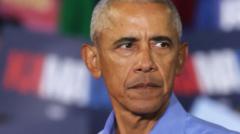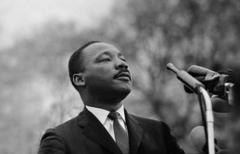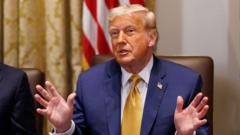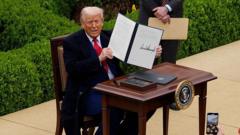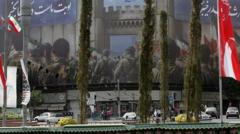Newly uncovered documents indicate that Queen Elizabeth II was kept in the dark for years regarding the espionage activities of one of her top courtiers, Anthony Blunt, who confessed to being a Soviet spy during the 20th century.
Queen Elizabeth II Kept in Dark Over Soviet Spy for Nearly a Decade
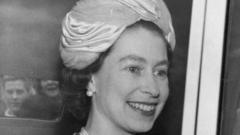
Queen Elizabeth II Kept in Dark Over Soviet Spy for Nearly a Decade
Declassified MI5 files reveal that the queen was unaware of her courtier Anthony Blunt's secrets for almost ten years.
In a release of MI5 files to the National Archives, it has come to light that Blunt, an eminent art historian and Surveyor of the Queen's Pictures, confessed in 1964 to spying for the Soviets since the 1930s. However, the queen was not formally informed of his treachery until the 1970s, almost a decade later.
The delay in communication to the monarchy coincided with increased anxiety within Whitehall about the intel being leaked, especially considering Blunt's deteriorating health due to cancer at the time. By the 1970s, journalists had begun investigating the case, and it was evident that an official disclosure was imminent.
Suspicion around Blunt began in 1951 when fellow spies Guy Burgess and Donald Maclean defected to the Soviet Union. Blunt had been in close association with Burgess since their college days at Cambridge, forming part of the notorious Cambridge Five group of spies. Blunt's role with MI5 during World War II was complicated further by multiple interrogations after 1951; despite this, he consistently denied any espionage.
In April 1964, MI5 interrogator Arthur Martin confronted Blunt, promising immunity in exchange for a full confession. He recounted his actions post-war and confirmed his communications with Russian intelligence. Despite such a major revelation, the information was kept tightly controlled; only the home secretary and senior officials were informed, while the queen's private secretary was only briefed on Blunt's implications.
It wasn't until 1973 that the queen officially learned the extent of Blunt's betrayal, after which she reportedly responded with calmness, noting the earlier suspicions that had arisen post-Burgess and Maclean's defection. This composed reaction has led some, including Blunt's biographer Miranda Carter, to suggest that the queen may have been privy to some details much sooner than officially reported.
The public exposure of Blunt’s espionage came in 1979 when Prime Minister Margaret Thatcher addressed it in Parliament. Following his confession, Blunt lost his knighthood and remained under scrutiny until his death in 1983 at the age of 75.
Notably, among the released MI5 documents, there are further insights into the broader shadowy world of espionage, including another notorious spy, Kim Philby, expressing no regrets about his treasonous activities.
Director General of MI5, Sir Ken McCallum, remarked on the importance of transparency where possible, indicating that while sensitive information must remain confidential, the exhibition of these documents is a step toward openness in historical security matters.
This revelation reflects the complex interplay between monarchy, national security, and the preservation of state secrets during a turbulent historical era.
The delay in communication to the monarchy coincided with increased anxiety within Whitehall about the intel being leaked, especially considering Blunt's deteriorating health due to cancer at the time. By the 1970s, journalists had begun investigating the case, and it was evident that an official disclosure was imminent.
Suspicion around Blunt began in 1951 when fellow spies Guy Burgess and Donald Maclean defected to the Soviet Union. Blunt had been in close association with Burgess since their college days at Cambridge, forming part of the notorious Cambridge Five group of spies. Blunt's role with MI5 during World War II was complicated further by multiple interrogations after 1951; despite this, he consistently denied any espionage.
In April 1964, MI5 interrogator Arthur Martin confronted Blunt, promising immunity in exchange for a full confession. He recounted his actions post-war and confirmed his communications with Russian intelligence. Despite such a major revelation, the information was kept tightly controlled; only the home secretary and senior officials were informed, while the queen's private secretary was only briefed on Blunt's implications.
It wasn't until 1973 that the queen officially learned the extent of Blunt's betrayal, after which she reportedly responded with calmness, noting the earlier suspicions that had arisen post-Burgess and Maclean's defection. This composed reaction has led some, including Blunt's biographer Miranda Carter, to suggest that the queen may have been privy to some details much sooner than officially reported.
The public exposure of Blunt’s espionage came in 1979 when Prime Minister Margaret Thatcher addressed it in Parliament. Following his confession, Blunt lost his knighthood and remained under scrutiny until his death in 1983 at the age of 75.
Notably, among the released MI5 documents, there are further insights into the broader shadowy world of espionage, including another notorious spy, Kim Philby, expressing no regrets about his treasonous activities.
Director General of MI5, Sir Ken McCallum, remarked on the importance of transparency where possible, indicating that while sensitive information must remain confidential, the exhibition of these documents is a step toward openness in historical security matters.
This revelation reflects the complex interplay between monarchy, national security, and the preservation of state secrets during a turbulent historical era.

